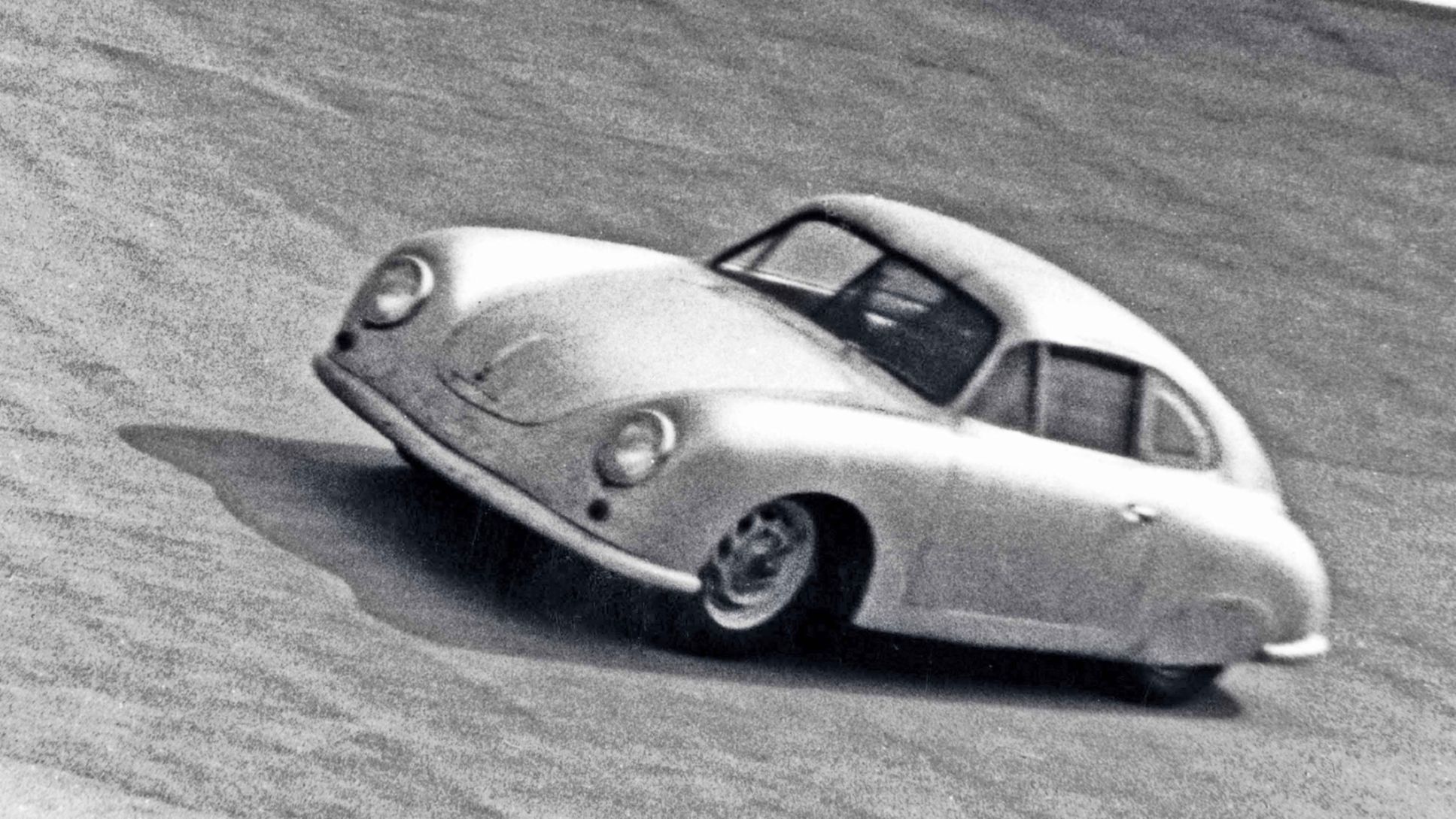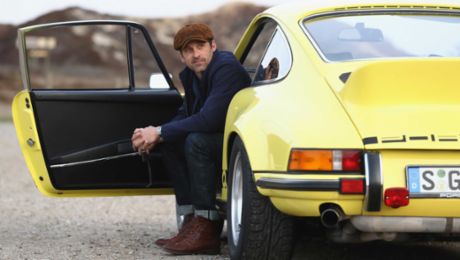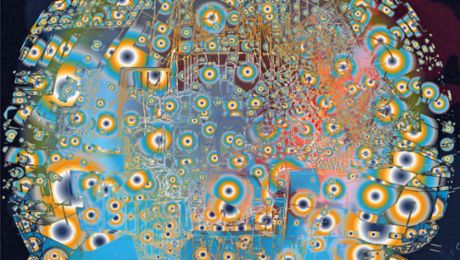Fearless race car driver, roving reporter, and innovative publicist. Born in Darmstadt in 1922, Richard von Frankenberg loved Porsche and lived for speed. In 1952, he brought his skills and racing expertise together in the Christophorus magazine, the first issue of which outlines his 1951 automotive world record with a Porsche 356 SL in the 1.5-litre class – the first for Porsche and for Germany after the end of the war. The facts are impressive: an average speed of 152.34 km/h over a distance of 10,987 kilometres, covered in 72 hours, including all of the pit stops.
But it’s not with these figures alone that von Frankenberg fascinates his readers. He provides them with an unflinching look inside the cockpit of the world record car. They can almost feel every bump themselves on the once-famous L’autodrome de Linas-Montlhéry course near Paris. Each lap is 2.54 kilometres long. The oval-shaped course consists of two straight lines and two steep turns with a concave profile, allowing for speeds well over 200 km/h.
Steep turns like walls
The author compares the pressure in his stomach on these very extreme stretches to the sensation you feel when pulling out of a nosedive. This nausea so colourfully described is also accompanied by dizziness: “As you approach the steep turn, it towers before you like a wall. Once you’re inside, it’s like driving on a normal road. That is, until the steep turn levels out again and, for just a moment, you don’t know what’s up and what’s down.” His descriptions flash before you like a blur of slides. We suffer with him as he fights to stay focused and register signs and people in his adrenaline rush at jolting speeds. We gradually see how the blurred contours of a figure come into focus, revealing a spy sitting there in the grass and hiding his stopwatch behind a newspaper.
After all, “the record-breaking driver is the loneliest person in the world” at night. We squint our eyes when von Frankenberg speeds through the darkness, guided by short headlight beams. Now only the small light box of the timekeeper’s hut and the pit offer points of orientation. For a duration of two hours, they flash by every 57 seconds, which is the length of time each driver has to complete each lap. Exhausted, we share in von Frankenberg’s relief when the pit finally gives him the signal that it’s time to switch drivers.
And then something happens that could risk it all: with Hermann Ramelow behind the wheel, the V-belt that drives the fan wheel tears twice within a short period of time after around 7,000 kilometres. The third belt needs to hold, as the stringent regulations rule out another replacement. After three days and three long nights, they finally break the world record of an average speed of 145.5 km/h – and not by just a little. Breathe in. Breathe out.
Automotive World Record
Date: 2 October 1951
Location: L’autodrome de Linas-Montlhéry, France
Circuit length: 2.54-kilometre
Car: Porsche 356 SL
Drivers: Richard von Frankenberg / Walter Glöckler / Fritz Huschke von Hanstein / Petermax Müller / Hermann Ramelow
Info
Text first published in the Porsche customer magazine Christophorus, No. 403.
Author: Heike Hientzsch
Photos: Porsche company archives
Copyright: All images, videos and audio files published in this article are subject to copyright. Reproduction in whole or in part is not permitted without the written consent of Dr. Ing. h.c. F. Porsche AG is not permitted. Please contact newsroom@porsche.com for further information.







